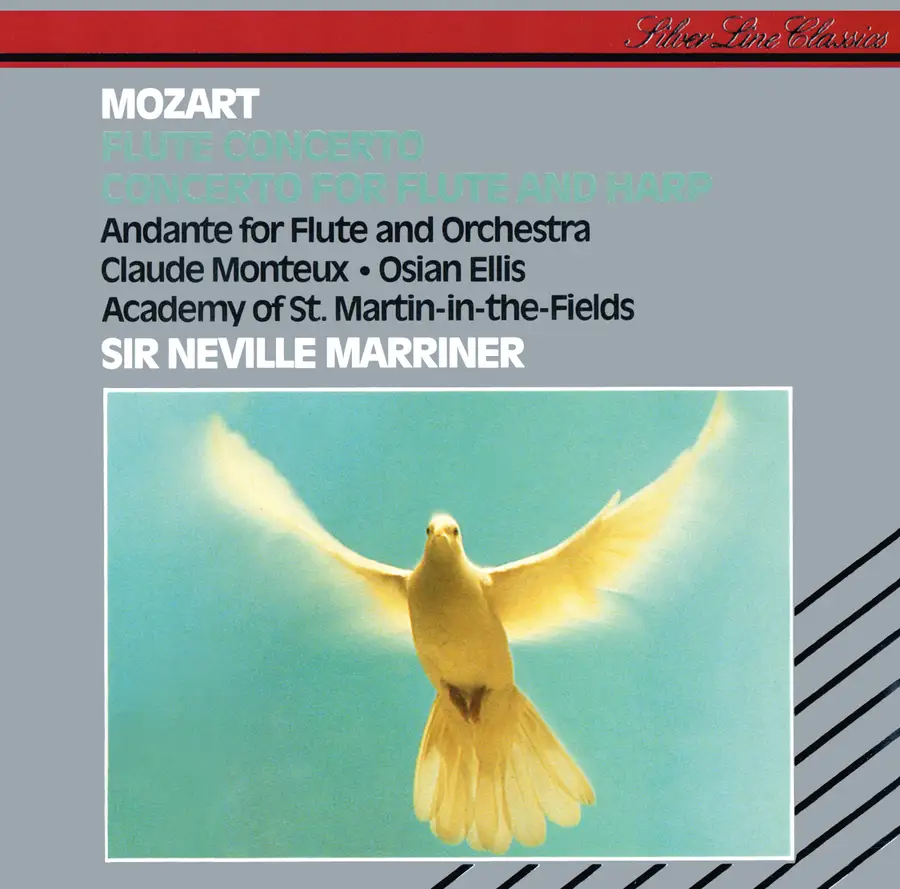As I understand it, the composer didn't much care for the instrument.
I have little idea of what a Classical-Era flute was like, wooden yet transverse by my guess, but I suppose you have to go where the money is, and so we have these three concertante work for flute from Mozart.
I quite enjoy the Double Concerto for Flute and Harp, for it is a bastion of sunshine. The musical settings are pert with nary a dark cloud in the forecast. Even the slow middle movement is more of a friendly discussion than anything deep or melancholic, and the combination of these two instruments are a match made in heaven.
I imagine recording these two instruments would be problematic for K. 299. Mozart was keen enough to not orchestrate too heavy for these instruments, so that issue is not present. The harp, though, is a rather delicate instrument; capture it too close at it can sound clattery and unnatural, yet place it too far in the background, and the instrument becomes inconsequential and merely orchestral coloring.
Philips captures the late Osian Ellis with the well-needed delicacy it requires, while also making it an equal partner with the flute. A wonderful tribute to the now defunct classical-music label, although why this 1972 performance was relegated to Philips' Silver Line Classics series is beyond me.
Claude Monteux, son of the famous conductor Pierre Monteux, makes deeper work of Mozart's Flute Concerto in G Major. While the friendliness continues in the opening movement, Mozart is more willing to take jaunts into minor-keyed realms, if only in passing. The proportions of the work seem more meaty too, where the musical development seems more meaningful and long lasting.
Whereas with harp, Mozart had to back off the orchestra to allow for the delicacy of that instrument, there is no such need for pussy-footing in K. 313. The interaction between orchestra and flute are ripe for exploration, and I think Mozart does really fine work here, fully exploring the range of the solo instrument. The middle movement captures the songfulness of the flute, while the outer movements showcase its technical abilities alongside Mozart's melody making.
The inclusion of the short Andante in C Major is a nice touch. Some will lament the absence of the Flute Concerto in D Major, K. 314, but that work is merely a transcription of Mozart's Oboe Concerto in C Major (BLOG), where that work exists much better in its original oboe form.
As mentioned before, I really have no idea why this recording has taken a backseat to Sir Neville's two later recordings, one with James Galway and another with Irena Grafenauer. I have always valued Marriner's recordings from the 60s and 70s most, whereas his post-Amadeus recordings seem like slick productions, often bereft of heart and a sense of special occasion. This is beautiful music-making of the highest order, where US Claude Monteux is untouched in his sound in this music, all on a modern transverse flute, whilst the Academy of St. Martin-in-the-Fields is alert and bristling with intent.
Works
Flute Concerto in C Major, K. 313 (24.57)
Flute and Harp Double Concerto, K. 299 (26.23)
Andante for Flute, K. 315 (6.02)
Soloists
Claude Monteux, flute
Osian Ellis, harp
Performers
Academy of St. Martin-in-the-Fields
Sir Neville Marriner, conductor
Label: Philips
Year: 1972; 1988
Total Timing: 57.43
This is a prime choice recording of Mozart's flute concertante works, at least for this listener. The combination of Monteux alongside a very alert Academy is wonderful.
Unfortunately, the promotion departments favor Marriner's later efforts.
Do yourself a favor; avoid those and find this one in the bargain bin.
Find more Mozart recordings HERE!




No comments:
Post a Comment